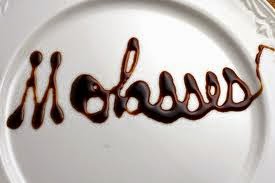The poultry feed and poultry feed additives market is observed to be growing at a steady pace in the future, due to the increasing demand for poultry meat and poultry meat products across the globe. Poultry feed is used to feed poultry, including chickens, turkeys, ducks, geese, and other domestic birds. Poultry additives are primarily included to improve the efficiency of the bird’s growth and/or laying capacity, prevent diseases, and improve feed utilization. Any additives used in the feed need to be approved for use and then used as directed with respect to inclusion levels and duration of feeding the poultry.
Poultry food ingredients and additives are specific for the type and age of birds being fed. Common feed additives used in poultry diets include antibiotics, vitamins, antibiotics, vitamins, antioxidants, amino acids, feed enzymes, acidifiers, and others. The largest markets for poultry feed and poultry feed additives include Asia-Pacific and North America, and they collectively account for more than 60% of the total consumption.
The poultry feed market is highly fragmented. Some of the key players profiled in the report include Evonik Industries AG (Germany), CHR. Hansen Holdings A/S (Denmark), Novus International Inc (U.S), Royal DSM N.V. ( The Netherlands), BASF (Badishce Anilin und Soda Fabrik) (Germany), Alltech Inc. (U.S), ADM (Archer Daniels Midland Company) (U.S), Charoen Popkhand Foods (Thailand), ABF Plc (Associated British Food) (U.K), and Cargill Inc (U.S).
In terms of consumption with the highest market share, the poultry feed market is led by the broilers segment and the poultry additives market was led by the antibiotics segment. By geography, it was dominated by Asia- Pacific with the market share of 35.4% in 2012. This region is projected to grow till 2018. The report is focused on the detailed study of the poultry feed market by type and, additive in different geographical regions with a thorough analysis of the market players in the industry. The key players covered in this report are Evonik Industries AG (Germany), CHR. Hansen Holdings A/S (Denmark), Novus International Inc (U.S), Royal DSM N.V. (The Netherlands), BASF (Badishce Anilin und Soda Fabrik) (Germany), Alltech Inc. (U.S), ADM (Archer Daniels Midland Company) (U.S), Charoen Popkhand Foods (Thailand), ABF Plc (Associated British Food) (U.K), and Cargill Inc (U.S).
This report provides a comprehensive analysis of the global poultry feed market, which witness faster growth on account of its diverse application in the poultry feed sector. http://www.molasses.co.in/contact-poultry-feed
Poultry food ingredients and additives are specific for the type and age of birds being fed. Common feed additives used in poultry diets include antibiotics, vitamins, antibiotics, vitamins, antioxidants, amino acids, feed enzymes, acidifiers, and others. The largest markets for poultry feed and poultry feed additives include Asia-Pacific and North America, and they collectively account for more than 60% of the total consumption.
The poultry feed market is highly fragmented. Some of the key players profiled in the report include Evonik Industries AG (Germany), CHR. Hansen Holdings A/S (Denmark), Novus International Inc (U.S), Royal DSM N.V. ( The Netherlands), BASF (Badishce Anilin und Soda Fabrik) (Germany), Alltech Inc. (U.S), ADM (Archer Daniels Midland Company) (U.S), Charoen Popkhand Foods (Thailand), ABF Plc (Associated British Food) (U.K), and Cargill Inc (U.S).
In terms of consumption with the highest market share, the poultry feed market is led by the broilers segment and the poultry additives market was led by the antibiotics segment. By geography, it was dominated by Asia- Pacific with the market share of 35.4% in 2012. This region is projected to grow till 2018. The report is focused on the detailed study of the poultry feed market by type and, additive in different geographical regions with a thorough analysis of the market players in the industry. The key players covered in this report are Evonik Industries AG (Germany), CHR. Hansen Holdings A/S (Denmark), Novus International Inc (U.S), Royal DSM N.V. (The Netherlands), BASF (Badishce Anilin und Soda Fabrik) (Germany), Alltech Inc. (U.S), ADM (Archer Daniels Midland Company) (U.S), Charoen Popkhand Foods (Thailand), ABF Plc (Associated British Food) (U.K), and Cargill Inc (U.S).
This report provides a comprehensive analysis of the global poultry feed market, which witness faster growth on account of its diverse application in the poultry feed sector. http://www.molasses.co.in/contact-poultry-feed


